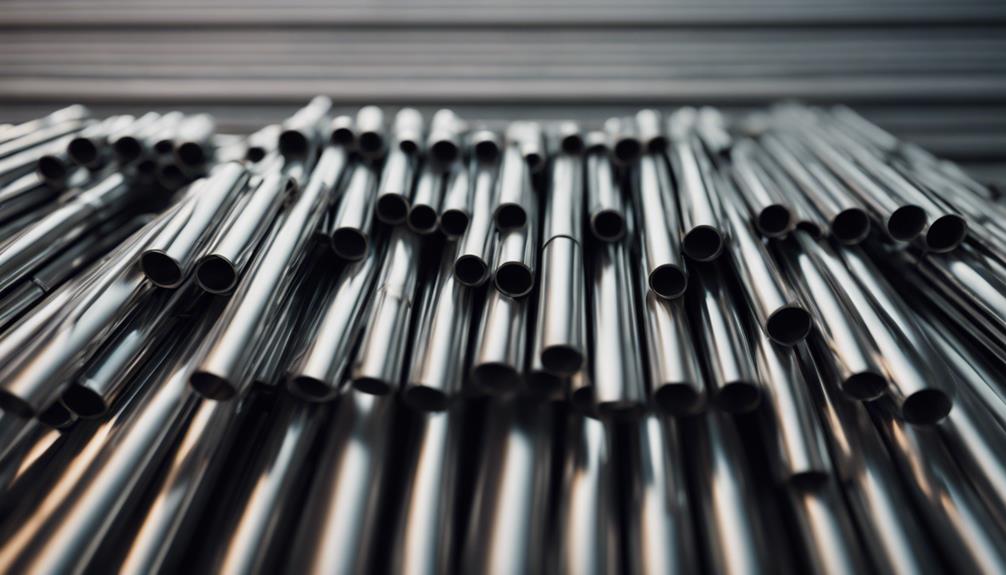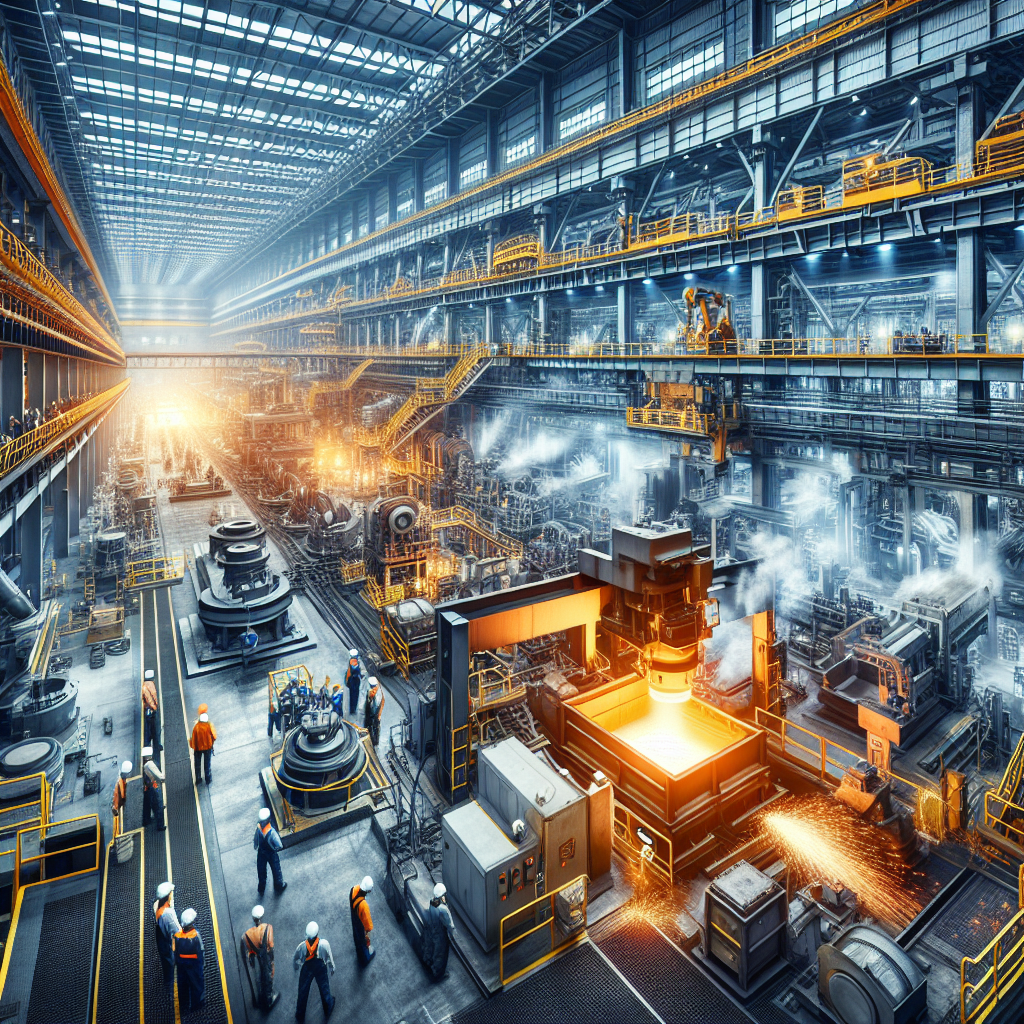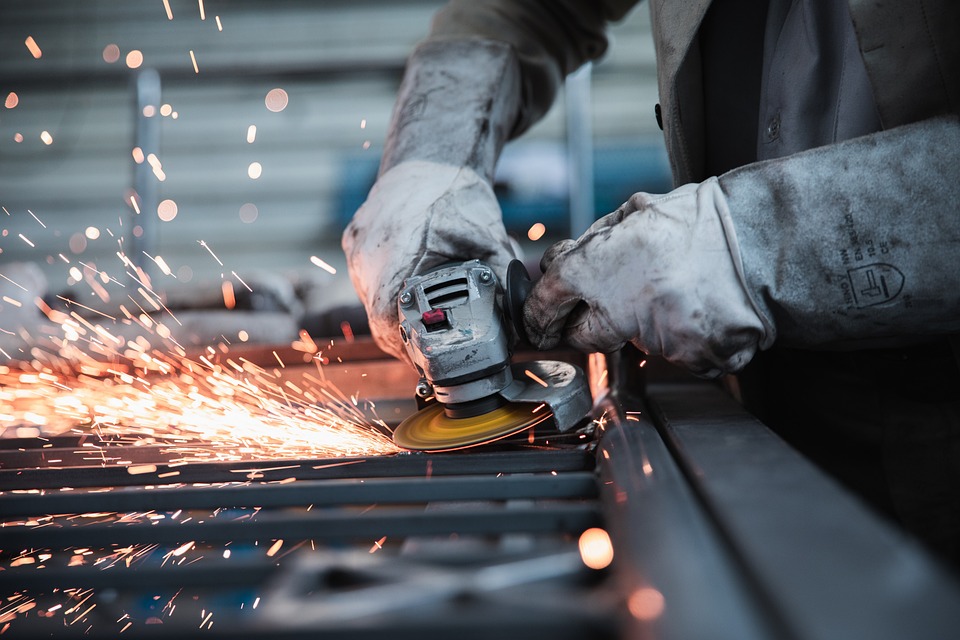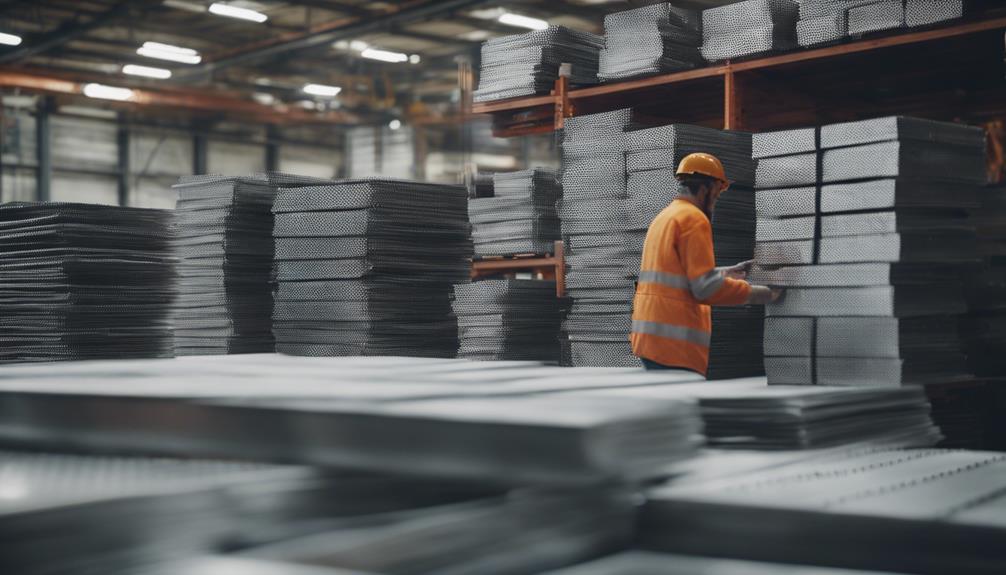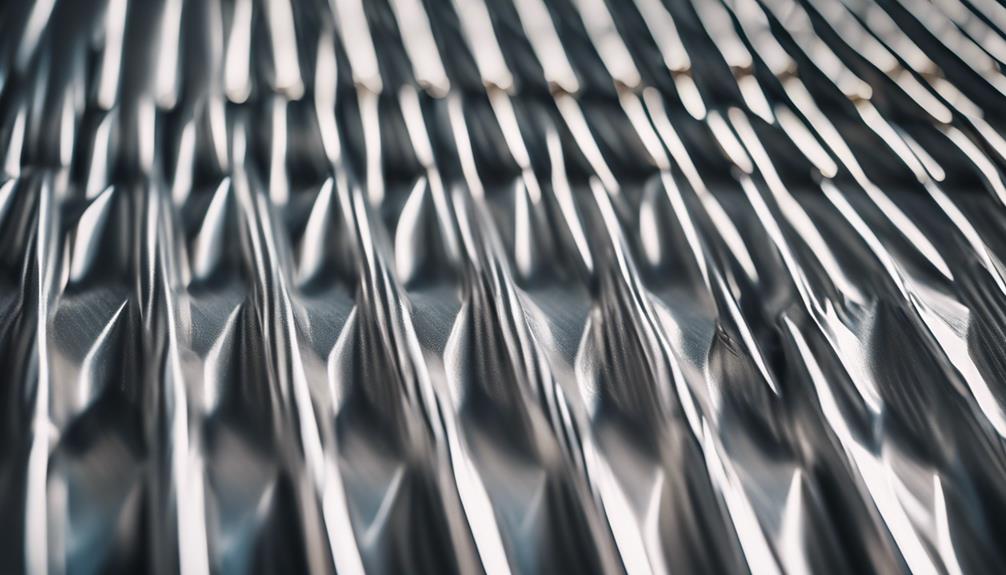Steel tubes are essential for various structural and fluid transfer applications. They come in seamless and welded varieties, each with unique characteristics. Seamless tubes, crafted from solid billets without welding, offer consistent strength and are ideal for high-pressure uses. Welded tubes, made by bending and welding steel strips, are cost-effective and suitable for less demanding applications. Considering factors like material composition, corrosion resistance, and intended use is important when selecting steel tubes. If you want to explore more about the benefits, applications, and maintenance tips for steel tubes, keep exploring the in-depth research provided.
Key Takeaways
- Seamless and welded steel tubes offer strength and durability for structural and industrial applications.
- Steel tubes are customizable in shapes, sizes, and finishes to meet specific project requirements.
- Various manufacturing processes like seamless, ERW, and DOM cater to different application needs.
- Steel tubes are environmentally friendly, recyclable, and exhibit excellent thermal conductivity.
- Regular maintenance, including inspections, cleaning, and protective coatings, ensures longevity and performance.
Types of Steel Tubes
There are several types of steel tubes used in various industries, each with unique manufacturing processes and characteristics. Seamless steel tubes are crafted from solid round steel 'billets' that are pierced to form a hollow tube without any welding. On the other hand, welded steel tubes are created by bending and welding a steel strip into the desired shape and size. Electric Resistance Welded (ERW) steel tubes are manufactured by cold-forming a steel strip into a cylindrical shape and welding the edges together. Drawn Over Mandrel (DOM) steel tubes undergo a different process where a solid steel bar is drawn through a die to reduce its diameter and wall thickness, culminating in a smooth and uniform tube.
Benefits of Steel Tubes
How do steel tubes offer a multitude of advantages for various industrial and construction applications? Steel tubes are highly favored for their exceptional strength and durability, making them a top choice for structural purposes. Their resistance to impact, corrosion, and harsh weather conditions guarantees long-lasting reliability in diverse environments. Additionally, steel tubes can be easily customized to specific project needs regarding shapes, sizes, and finishes, enhancing flexibility in design and construction. Furthermore, these tubes are environmentally friendly and recyclable, aligning with sustainable construction practices. Their outstanding thermal conductivity further expands their utility to applications requiring efficient heat transfer, showcasing the versatility and efficiency of steel tubes in various industries and projects.
Manufacturing Processes of Steel Tubes
Steel tubes are crafted through various manufacturing processes, each tailored to meet specific requirements and standards within the industry. One common method is seamless tube manufacturing, where a solid steel bar is pierced to create a hollow tube. Welded tube manufacturing is another prevalent technique, involving the formation of flat steel strips into a tube shape, welded along the seam. Processes like bending, cutting, and shaping are essential in steel tube manufacturing to achieve the desired size and dimensions. Finishing techniques like annealing for stress relief and coating for corrosion resistance are also applied. Steel tubes find extensive use in construction, automotive, and infrastructure sectors, valued for their strength, durability, and versatility in diverse applications.
Applications of Steel Tubes
Steel tubes play an important role in a wide range of industries due to their exceptional strength and precise dimensions. Commonly used in structural applications, steel tubes provide the necessary support and durability required in construction projects. These tubes are essential for transferring gases and liquids, making them integral in industries such as oil and gas, construction, automotive, and manufacturing. The versatility of steel tubes extends to different types, including seamless and welded variations, each catering to specific needs. Whether it's for structural support, fluid transportation, or other industrial applications, steel tubes offer reliability and efficiency in various settings. The availability of different finishes further enhances their suitability for diverse requirements in different sectors.
Differences Between Seamless and Welded Steel Tubes
The distinction between seamless and welded tubes lies in their manufacturing processes and structural characteristics. Seamless steel tubes are produced by extruding a solid billet through a piercing rod, resulting in a hollow tube without any welding. On the other hand, welded steel tubes are created by welding together flat steel sheets, which may display visible seams along their length. Due to the intricate manufacturing process, seamless tubes tend to be more costly to produce than welded tubes. Welded tubes are commonly used in applications where high strength is not the primary concern, while seamless tubes are favored for high-pressure or critical applications due to their uniform structure and consistent strength throughout.
Considerations for Selecting Steel Tubes
When evaluating steel tubes for specific applications, it is important to carefully consider factors such as size, material composition, and intended usage to ensure top performance and durability. Factors like application requirements, pressure rating, temperature range, and corrosion resistance play an essential role in selecting the right steel tubes. The type of steel utilized in the tube greatly impacts its strength, durability, and suitability for diverse environments. Additionally, considerations such as weldability, formability, machinability, and overall cost-effectiveness are crucial in the decision-making process. By understanding the intended use and environmental conditions, one can choose the most suitable steel tube for structural, mechanical, or industrial applications.
Maintenance Tips for Steel Tubes
Considering the longevity and prime performance of steel tubes, it is essential to implement effective maintenance practices to prevent corrosion and damage. Regular inspections should be conducted to identify any signs of corrosion, dents, or damage that may compromise the integrity of the tubes. Cleaning the steel tubes with a gentle detergent and water will help remove dirt and debris, ensuring peak performance. Applying a rust-resistant coating or paint to steel tubes exposed to outdoor elements can greatly reduce the risk of corrosion. Additionally, using protective caps or covers on steel tube ends will prevent moisture and debris buildup. Proper storage techniques, such as keeping the steel tubes off the ground, should also be implemented to avoid potential damage.
Frequently Asked Questions
What Is Steel Tube Used For?
Steel tubes are versatile components utilized across industries for structural support, fluid transportation, machinery manufacturing, automotive applications, and furniture construction. Their durability, strength, and flexibility make them indispensable in various fields, ensuring reliable performance.
What's the Difference Between Steel Pipe and Steel Tube?
Steel pipes and tubes are distinct in their uses and designs. Pipes are cylindrical, conveying fluids and gases, while tubes vary in shape and provide structural support. Tubes are often stronger due to their shape, ideal for construction and industrial applications.
What Are the Two Types of Steel Tubes?
There are two main types of steel tubes: seamless tubes and welded tubes. Seamless tubes are preferred for high-pressure applications due to their uniform structure and strength, while welded tubes are commonly used in structural applications for cost-effectiveness.
What Are Steel Tube Sizes?
Steel tube sizes refer to standardized dimensions based on outer diameter, wall thickness, and length specifications. These dimensions vary from 0.25 inches to 16 inches in diameter, with different wall thickness options and lengths, catering to diverse industry requirements.






